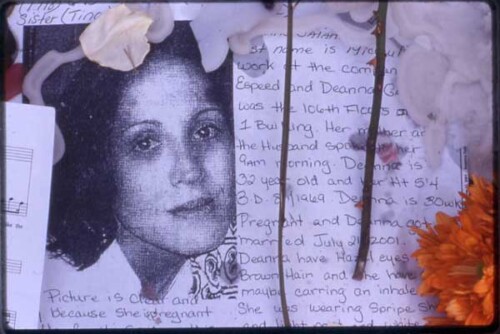Queer Temporality
This essay is drawn from a book-length study of the explosion of queer urban subcultures in the last decade. My larger purpose is to examine how many queer communities experience and spend time in ways that are very different from their heterosexual counterparts. Queer uses of time and space develop in opposition to the institutions of family, heterosexuality, and reproduction, and queer subcultures develop as alternatives to kinship-based notions of community. In my work on subcultures, I explore the stretched out adolescences of queer culture makers and I posit an “epistemology of youth” that disrupts conventional accounts of subculture, youth culture, adulthood, race, class, and maturity.1 Queer subcultures produce alternative temporalities by allowing their participants to believe that their futures can be imagined according to logics that lie outside of the conventional forward-moving narratives of birth, marriage, reproduction, and death. It is usual in the study of gender and sexuality to use the term “queer” to refer simply to “sexual minorities.” And while “queer” certainly takes on this meaning in my study, it can also be defined here as an outcome of temporality, life scheduling, and eccentric economic practices. When we detach queerness from sexual identity in this way, we come closer to understanding Michel Foucault’s comment in an interview that “homosexuality threatens people as a way of life” rather than as a way of having sex.2
Much of the contemporary theory seeking to disconnect queerness from an essential definition of homosexuality has focused upon queer space and queer sexual practices, but such theories depend, implicitly, upon a rarely articulated notion of queer time.3 They also concentrate almost exclusively upon the activities of white gay men. This study will include material on and by white gay men but it will focus on lesbian and transgender subcultures (punk, drag, performance, spoken word) and will pay special attention to racialized constructions of youth, leisure, waste, and maturity. The focus on queer subcultures, and dyke subcultures in particular, allows us to make some potentially new claims about agency, style, liminality, community, and history. A broad-based study of queer subcultures, as I have suggested, can provide material evidence for lives lived “otherwise,” outside of the conventional life narratives of family and reproduction, but it can also point to those modes of resistance which survive the encounter between marginal subjects and dominant culture.
An essay by Judith Butler in a volume dedicated to the work of Stuart Hall tackles the question of what kinds of agency can be read into forms of activity that tend to be associated with style. She asks: “. . . how do we read the agency of the subject when its demand for cultural and psychic and political survival makes itself known as style?” (36). And, building on the work by Hall and others in the classic volume on subcultures Resistance Through Rituals, Butler puts the concept of “ritual” into motion as a practice that can either reinforce or disrupt cultural norms. Liminal subjects, she implies, those who are excluded from “the norms that govern the recognizability of the human,” are sacrificed to maintain coherence within the category of the human, and, for them, style is both the sign of their exclusion and the mode by which they survive nonetheless. The power of Judith Butler’s work, here and elsewhere, lies in her ability to show how much has been excluded, rejected, abjected in the formation of human community and what toll those exclusions take upon particular subjects.
Punk has always been the stylized and ritualized language of the rejected; as Poly Styrene of Xray Spex sings: “I am a reject and I don’t care!” Queer punk has surfaced in recent years as a potent critique of hetero- and homonormativity and dyke punk in particular, by bands like Tribe 8 and The Haggard, inspires a reconsideration of the topic of subcultures in relation to queer cultural production and in opposition to notions of gay community. Subcultures provide a vital critique of the seemingly organic nature of “community,” and they make visible the forms of un-belonging and disconnection that are necessary to the creation of community. At a time when “gay and lesbian community” is used as a rallying cry for fairly conservative social projects aimed at assimilating gays and lesbians into the mainstream of the life of the nation and family, queer subcultures preserve the critique of heteronormativity that was always implicit in queer life. Community, generally speaking, is the term used to describe seemingly natural forms of congregation. As Sarah Thornton comments in her introduction to The Subcultures Reader: “Community tends to suggest a more permanent population, often aligned to a neighborhood, of which family is the key constituent part. Kinship would seem to be one of the main building blocks of community.”4 Subcultures, however, suggest transient, extra-familial and oppositional modes of affiliation. The idea of community, writes Jean Luc Nancy, emerges out of the Christian ritual of communion and expresses a sense of something that we once had that has now been lost, a connection that was once was organic and life giving that now is moribund and redundant. Nancy calls this the “lost community” and expresses suspicion about this “belated invention.” Nancy writes: “What this community has “lost” – the immanence and the intimacy of a communion – is lost only in the sense that such a “loss” is constitutive of “community” itself.”5 The reminder that quests for community are always nostalgic attempts to return to some fantasized moment of union and unity reveals the conservative stakes in community for all kinds of political projects and makes the reconsideration of subcultures all the more urgent.
- Thanks to Glen Mimura for the formulation of “an epistemology of youth.” [↩]
- Michel Foucault, “Friendship as a Way of Life” in Foucault Live: Collected Interviews, 1961-1984, edited by Sylvere Lotringer, translated by Lysa Hochroth and John Johnston (NY: Semiotext[e], 1996): 310. [↩]
- For work on queer space see Gordon Brent Ingram, Anne-Marie Bouthillette, Yolanda Retter eds. Queers in Space: Communities, Public Places, Sites of Resistance, (Seattle, WA: Bay Press, 1997); David Bell and Gill Valentine eds. Mapping Desire: Geographies of Sexuality (New York: Routledge, 1995); Boone, Joseph et al., eds. Queer Frontiers: Millennial Geographies, Genders, and Generations, (Madison, WI: University of Wisconsin Press, 2000). [↩]
- Sarah Thornton: “General Introduction” to The Subcultures Reader, eds. Ken Gelder and Sarah Thornton (New York and London: Routledge, 1997): 2. [↩]
- Jean Luc Nancy, “The Inoperative Community” in The Inoperative Community, ed. Peter Connor, translated by Peter Connor, Lisa Garbus, Michael Holland, and Simona Sawhney, foreword by Christopher Fynsk (Minneapolis, MN: University of Minnesota Press, 1991): 12. [↩]



